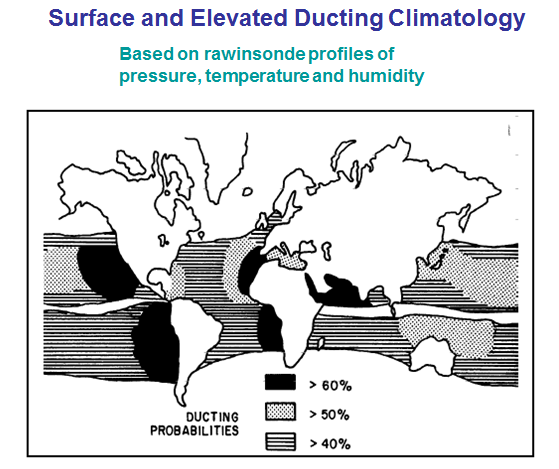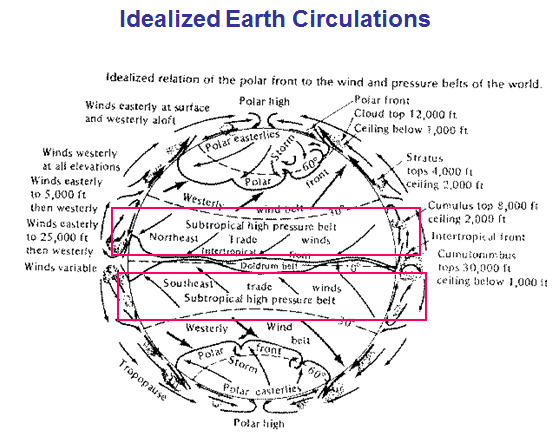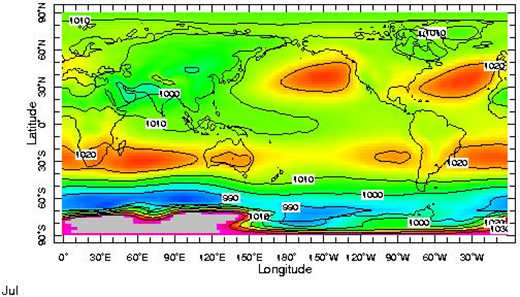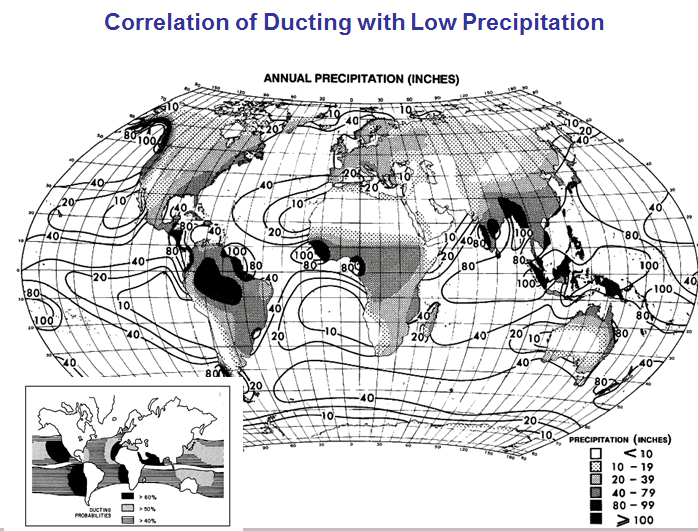

Why is ducting more common in the subtropics? Because this is where high pressure systems and associated sinking air and inversions are most common.




We now return to ducting conditions and look at what loctaions on earth have the greatest likelihood of having ducting-favorable conditions. For now the focus is on surface and surface-based ducts. We will examine evaporation duct climatology in module 4.
 |
Look at the map to the left, which shows ocean regions where ducts are most likely to occur. Ocean areas in white have a less than 40% occurrence rate. Note that ducts are most common on the eastern parts of the Atlantic and Pacific Oceans and in the Arabian Gulf and Arabian Sea region. You may also notice that ducting is more common in the subtropics. |
 |
This is a diagram showing a simplified representation of Earth’s circulation patterns and climatic regions. Ducting is most common in the subtropical higher pressure regions, shown in the red rectangles, which exist poleward of the trade winds and equatorward of the mid-latitude westerlies in both the Northern and Southern hemispheres.
Why is ducting more common in the subtropics? Because this is where high pressure systems and associated sinking air and inversions are most common. |
 | |
  |
The plots at left show pressure for January (top) and July (bottom). High pressure regions are shown in red, and are correlated with ducting - you may want to compare these maps with the first map on the page. Notice the high pressure regions off the west coast of North America especially in July, and in the North Atlantic. Also, eastern areas of oceans (such as along the western U.S.), tend to have cold ocean currents, which create strong temperature inversions that trap moisture at the lowest levels. |
| In the map below you will see a correlation of ducting (shown in the inset map) with low precipitation. Ducting areas over oceans are highly negatively correlated with rainfall amount. This is because rain is associated with rising air that destroys inversions. This contrasts with high pressure areas that have little rainfall and sinking air. Examples of this are near deserts, such as to the west of Africa, to the west of South America and offshore of the southwestern U.S. | |
 |
|